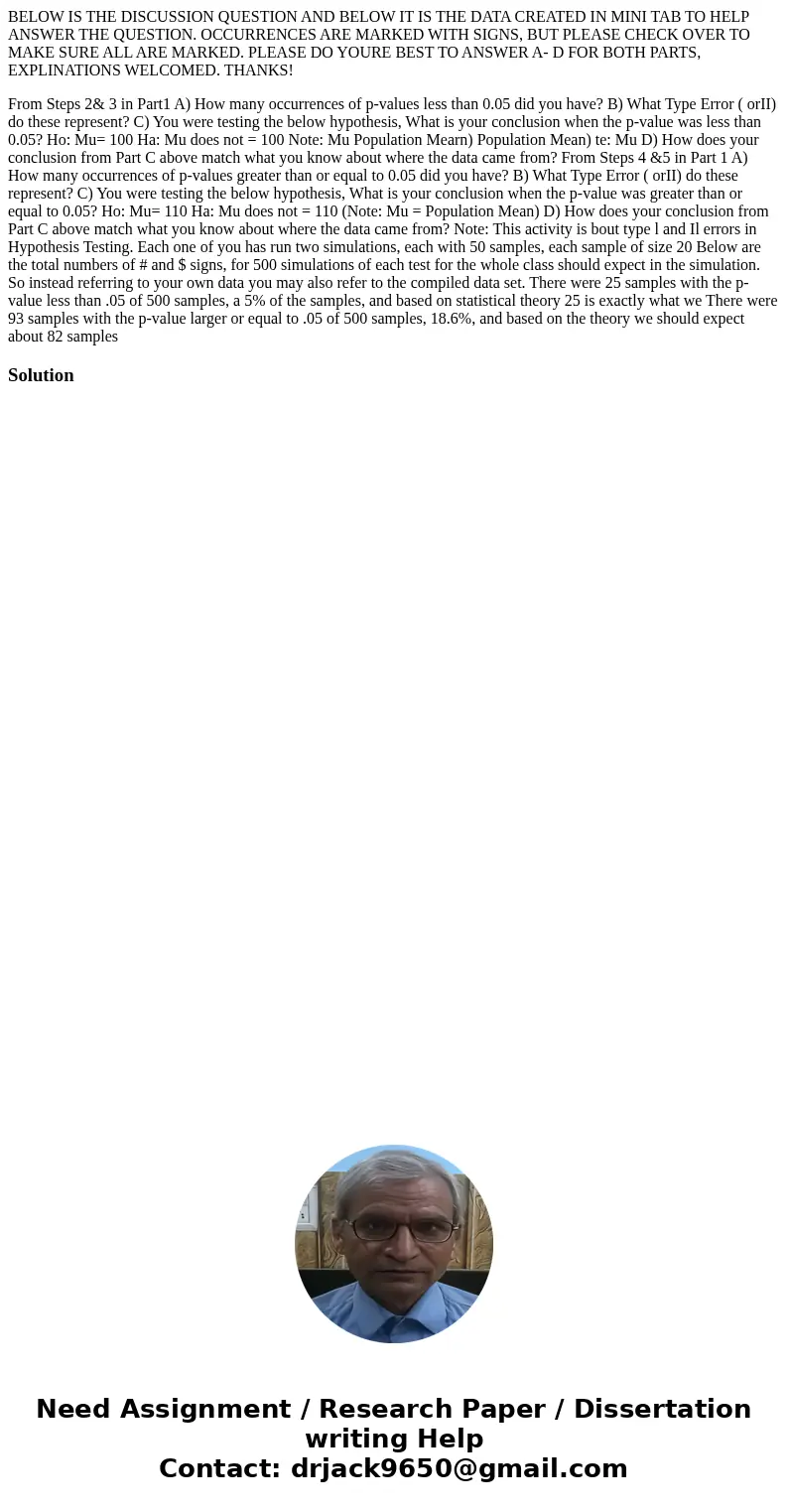BELOW IS THE DISCUSSION QUESTION AND BELOW IT IS THE DATA CR
BELOW IS THE DISCUSSION QUESTION AND BELOW IT IS THE DATA CREATED IN MINI TAB TO HELP ANSWER THE QUESTION. OCCURRENCES ARE MARKED WITH SIGNS, BUT PLEASE CHECK OVER TO MAKE SURE ALL ARE MARKED. PLEASE DO YOURE BEST TO ANSWER A- D FOR BOTH PARTS, EXPLINATIONS WELCOMED. THANKS!
From Steps 2& 3 in Part1 A) How many occurrences of p-values less than 0.05 did you have? B) What Type Error ( orII) do these represent? C) You were testing the below hypothesis, What is your conclusion when the p-value was less than 0.05? Ho: Mu= 100 Ha: Mu does not = 100 Note: Mu Population Mearn) Population Mean) te: Mu D) How does your conclusion from Part C above match what you know about where the data came from? From Steps 4 &5 in Part 1 A) How many occurrences of p-values greater than or equal to 0.05 did you have? B) What Type Error ( orII) do these represent? C) You were testing the below hypothesis, What is your conclusion when the p-value was greater than or equal to 0.05? Ho: Mu= 110 Ha: Mu does not = 110 (Note: Mu = Population Mean) D) How does your conclusion from Part C above match what you know about where the data came from? Note: This activity is bout type l and Il errors in Hypothesis Testing. Each one of you has run two simulations, each with 50 samples, each sample of size 20 Below are the total numbers of # and $ signs, for 500 simulations of each test for the whole class should expect in the simulation. So instead referring to your own data you may also refer to the compiled data set. There were 25 samples with the p-value less than .05 of 500 samples, a 5% of the samples, and based on statistical theory 25 is exactly what we There were 93 samples with the p-value larger or equal to .05 of 500 samples, 18.6%, and based on the theory we should expect about 82 samplesSolution

 Homework Sourse
Homework Sourse